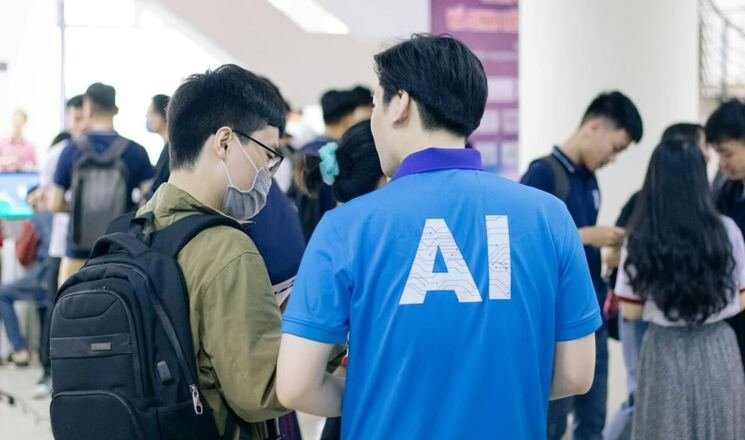While AI’s influence on data center strategy is rapidly growing, the conversation around its adoption remains far from settled. On one side are advocates who view AI as a transformative tool for automation, predictive analytics, and system reliability. On the other are critics who warn of heightened operational complexity, cybersecurity risks, and increasing dependence on expensive, energy-intensive systems.
Both perspectives are grounded in real-world developments, and as AI continues to permeate the data center industry, a nuanced understanding of its dual-edged impact is essential.
AI’s contributions to data center performance are measurable. Facilities are increasingly leveraging AI-powered systems to enhance energy efficiency – a top concern as power consumption scales with the expansion of digital infrastructure. AI algorithms now play a critical role in managing cooling systems, dynamically adjusting airflow, temperature, and humidity to meet real-time needs. Machine learning models predict when components like fans or chillers are degrading, allowing preventative maintenance and reducing energy surges.
These same models help optimize power distribution by shifting energy away from idle servers and prioritizing high-demand workloads. In facilities integrating renewable energy sources, AI is tasked with switching between solar, wind, and grid electricity based on price and availability forecasts, reducing both environmental impact and operational costs.
Workload Allocation, Hardware Maintenance
Beyond energy management, AI is increasingly responsible for workload allocation. Data centers operate more dynamically thanks to AI systems that monitor server performance and reassign computing tasks based on real-time metrics. During low demand, servers can be powered down or placed in energy-saving modes, while peak times trigger the automatic activation of additional capacity.
These systems not only balance performance but also extend hardware lifespan and reduce wear by preventing overload. For critical operations, AI can prioritize certain workloads, ensuring that business-essential functions continue uninterrupted even during infrastructure strain.
Hardware maintenance, historically a reactive and labor-intensive process, is also being transformed. AI models, trained on sensor and performance data, can identify subtle patterns that indicate imminent hardware failure. Data center administrators now rely on these insights to replace components like hard drives or power units before faults occur.
Some facilities have gone further by integrating predictive analytics into automated scheduling systems, allowing AI to generate and update maintenance calendars without human intervention. This approach minimizes downtime, reduces emergency repair costs, and strengthens service-level agreement (SLA) compliance.
Cybersecurity, Cost Reduction
Operational cost reduction is perhaps the most universally cited benefit of AI implementation. Automation of routine monitoring and troubleshooting tasks reduces the need for manual oversight. Forecast-driven resource allocation and load balancing allow data centers to run leaner during off-peak hours. AI-optimized cooling cuts utility bills, and predictive maintenance prevents unplanned capital expenditures. Facilities benefit from data-driven decision-making as AI uncovers inefficiencies and reveals new optimization opportunities, ultimately enabling scalable growth without proportional increases in overhead.
Cybersecurity is another area where AI plays a critical role. Data centers, by nature, store vast amounts of sensitive information and must defend against an expanding array of threats. AI tools are now deployed to monitor network traffic and user behavior continuously, identifying anomalies that could indicate unauthorized access, malware infections, or distributed denial-of-service (DDoS) attacks. These systems go beyond signature-based threat detection, using advanced behavioral models to spot irregularities – such as unusual login locations or data transfer spikes – that might otherwise go unnoticed.
In many cases, AI systems initiate automatic responses to threats, isolating affected nodes, adjusting firewall settings, or rolling back system changes. Some centers also use AI to operate honeypots – decoy systems designed to lure attackers and study their tactics, helping build stronger defenses.
New Data Center Operations Challenges
Despite these clear advantages, AI introduces a host of new challenges. One of the most pressing is increased operational complexity. AI models require access to massive, continuously updated datasets to function effectively. Maintaining this data pipeline is nontrivial errors in data ingestion, delays in processing, or inconsistencies in formatting can all degrade model performance or lead to faulty outputs.
AI systems also demand constant retraining and recalibration to remain effective in changing environments. Unlike static systems, AI models can ‘drift’ over time as underlying patterns in workloads or infrastructure evolve. Managing this drift requires ongoing technical expertise and oversight.
Integration challenges also arise when deploying AI within existing IT frameworks. AI models must interface with traditional monitoring systems, databases, and infrastructure control panels – often requiring significant customization. For data centers running legacy systems, retrofitting AI can be particularly resource-intensive and disruptive.
The financial burden of AI deployment is another significant consideration. High-performance AI workloads require specialized hardware like GPUs and TPUs, which are considerably more expensive than conventional server equipment. Beyond hardware, data centers must invest in software, integration services, and personnel – AI engineers, data scientists, and infrastructure specialists – to build and maintain these systems. Ongoing costs include training existing staff, managing system updates, and sustaining more energy-intensive operations.
Power Requirements, Security Risks, Human Expertise
Indeed, the power demands of AI are not trivial. Training and operating machine learning models, particularly in deep learning scenarios, consumes substantial energy. As AI systems are layered across workloads, security, and infrastructure management, their cumulative power requirements can significantly inflate energy consumption, leading to higher operational expenses and greater environmental impact.
New security risks also emerge from AI integration. AI models can become attack vectors in themselves. Data poisoning, where adversaries manipulate training data to mislead models, can result in dangerous errors in threat detection, workload allocation, or resource planning. Other forms of attack – such as model inversion, inference attacks, or adversarial input manipulation – can compromise both the AI system and the data center it supports. Compounding the issue is the opaque nature of many AI algorithms; often dubbed ‘black boxes,’ these systems can make decisions that are difficult for human operators to interpret or audit. This lack of transparency can mask vulnerabilities until they are exploited.
Another less discussed but equally important downside is the gradual erosion of human expertise. As AI systems automate more tasks, operators may become overly reliant on automation. Over time, teams may lose the hands-on skills necessary to intervene manually during critical failures, physical disasters, or AI malfunctions. Scenarios like major power outages, flooding, or sophisticated cyberattacks could require quick thinking and improvisation – capabilities that diminish in a culture overly dependent on algorithmic management. Moreover, complacency can set in, as personnel begin to treat AI outputs as infallible. This mindset reduces vigilance, increasing the risk of oversight.
AI Redefining Data Centers
Looking forward, AI’s role in data centers is set to expand even further. Emerging use cases include enhanced disaster recovery planning, real-time capacity forecasting, smarter compliance monitoring, and even fully autonomous data center operations. As AI systems grow more sophisticated, the vision of a ‘lights-out’ data center – one that runs itself with minimal human oversight – moves closer to reality. In this future, human operators would focus less on daily management and more on strategic oversight and exception handling.
The rise of edge data centers will further deepen AI’s integration into the infrastructure ecosystem. Smaller, localized facilities powered by AI are increasingly used to reduce latency and process data near its source. These edge nodes work in tandem with central data centers, handling time-sensitive tasks like real-time analytics or autonomous system coordination before syncing with the core. AI will be central to managing data flow between edge and core, balancing responsiveness with efficiency.
AI’s growing dominance will also drive the need for specialized data center designs tailored to machine learning workloads. These next-generation facilities may feature custom architecture optimized for high-speed interconnects, advanced cooling systems, and AI-native resource orchestration. For businesses expanding their AI capabilities, co-locating or migrating workloads to such AI-optimized centers may become a strategic priority.
The road ahead is clear: data centers will not just use AI – they will be redefined by it. But the transition must be deliberate. Facility operators must evaluate both the upside and the trade-offs. The potential for efficiency gains, predictive resilience, and intelligent automation is enormous, but so too are the risks related to cost, security, and human capital.
AI is not a plug-and-play solution. It is an evolving set of technologies that, when thoughtfully deployed, can transform how data centers operate and compete. Yet, without rigorous oversight, investment in talent, and a balanced understanding of its limitations, AI may also introduce new forms of fragility. For data centers navigating this shift, success will depend not just on how quickly they adopt AI, but on how wisely they integrate it into their long-term strategic vision.


